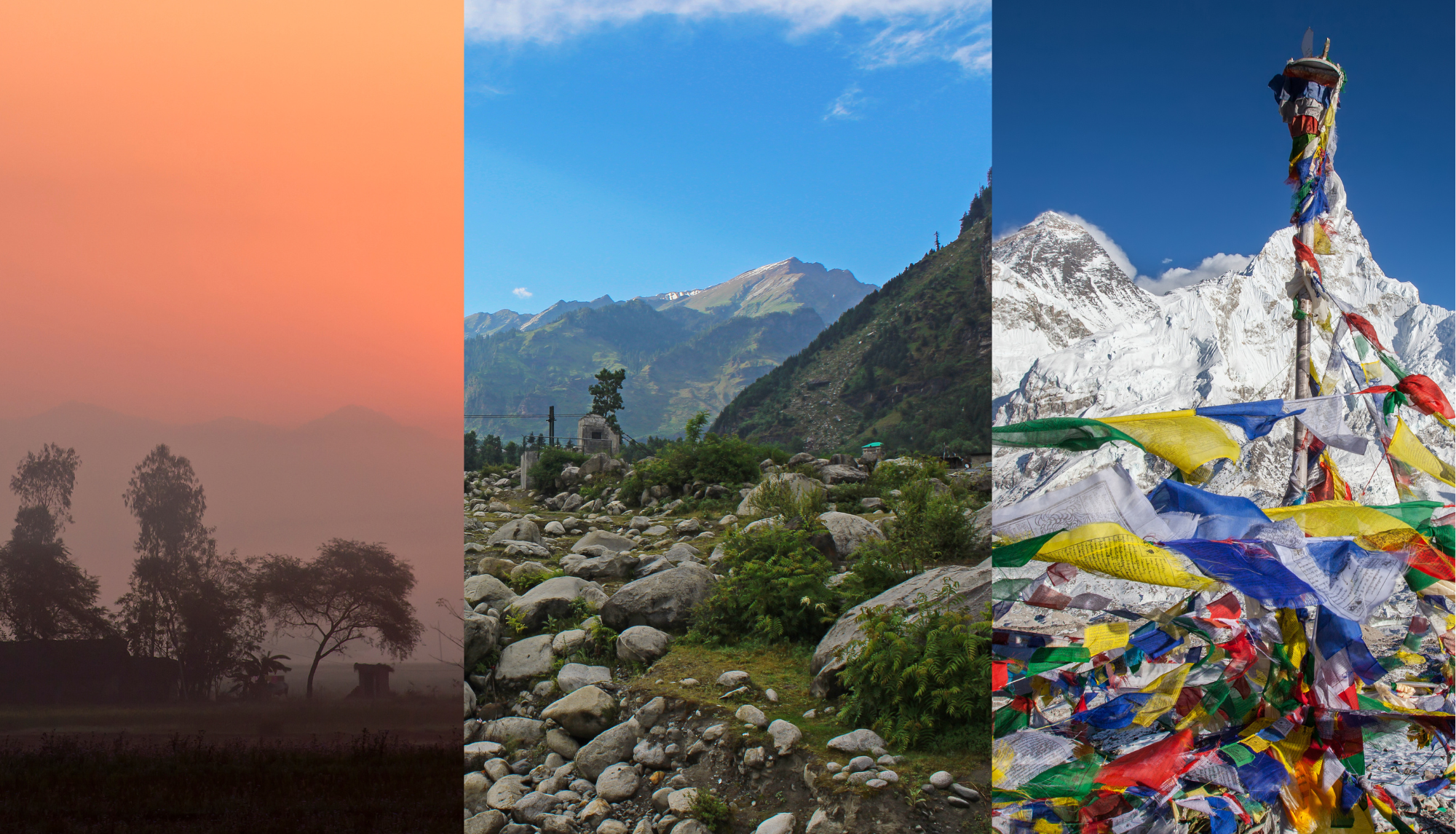About Nepal
The Sapana team members are enthusiastic visitors to Nepal and immediately fell in love with this beautiful country and its devoted inhabitants.
Nepal with…
- its delicious food, which is also a treat for vegetarians and is eaten with the hands
- the mountains that make all our problems seem small
- its hospitable and heartwarming people, who always make you feel at home
- the children, who are already so eager to learn and curious
- the turbulent bus rides, where after every turn you are grateful to be still alive
and sooooo much more…
Our Experiences
When I got off the bus in a small, untouristy village, I was immediately welcomed by the villagers, who showed me around and fed me. Since I was only wearing flip-flops, one mother even wanted to give me her sneakers. As this family didn’t have much themselves, I was deeply touched by this gesture and would like to give something back to these generous people. – Fernanda
When I was in Nepal, a Hindu religious festival was taking place. A Nepalese man named Sunesh welcomed me into his group of friends, and I was able to celebrate with them and learn a lot about Nepalese culture. We are still friends today. – Manu
Culture, Language, and Religion
Culturally, Nepal is anything but homogeneous and is very diverse: there are over 100 ethnic groups and 124 languages or dialects – a mosaic of minorities. These include, for example, the Sherpa, who are often mentioned in connection with mountain tourism in the country.
The official language is Nepali, which was very difficult for us to learn. Similar to India, Nepal has a caste system, which is less strictly enforced today than it used to be. Over 80% of the population is Hindu, 9% is Buddhist, 4% is Muslim, and the rest is Christian and other minorities.
The varied Landscape
When you think of Nepal, do mountains like Mount Everest immediately come to mind? Would you have thought that this country is also home to rhinos, elephants, and crocodiles? No? Then here are some facts about its geography:
Similar to Switzerland with the Jura, the Swiss Plateau, and the Alps, Nepal is geographically divided into three regions:
- The Terai in the south, a relatively small, fertile lowland area on the border with India, where almost half of the population lives. The climate is tropical and temperatures can exceed 40 degrees Celsius, which is why elephants and rhinos can be found there.
- The mountainous region of Pahad (the central plateau), which is generally not covered in snow, is home to almost the rest of the population. It is heavily divided by mountains and relatively inaccessible to traffic. Especially on the off-road roads, you will definitely find yourself praying for your life a few times.
- The high mountain region of Himal, which encompasses large parts of the Himalayan mountain range and whose valleys are home to the rest of the population. Although this part of the country is sparsely populated, it is a popular destination for trekkers and mountaineers. Mount Everest, the world’s highest mountain, is a particularly popular destination. Eight of the ten highest mountains are (partly) located in Nepal.

Tourism
Tourism in Nepal is different from that in typical tourist destinations. It is uncrowded, conscious, open, adventurous, and close to nature. It is strongly influenced by the impressive landscapes of the Himalayas, especially Mount Everest, which attracts numerous mountaineers and adventurers.
In addition to adventure tourism, Nepal also offers cultural treasures such as the UNESCO World Heritage Sites in Kathmandu, including Pashupatinath and the ancient royal cities of Bhaktapur and Patan. Spiritual practices such as Vipassana meditation, breathwork, and yoga are also particularly widespread in tourist regions such as Kathmandu and Pokhara.
Tourism plays a significant role in the country’s economy, but it also poses challenges such as environmental protection and sustainable infrastructure development.
Politics
Throughout the 20th century, Nepal, formerly Gorkha, was a kingdom. Nepal’s Maoist-influenced Communist Party fought a complex civil war against the monarchy and the caste system, after which the deposed parliament was reinstated, the king’s powers were curtailed, and finally, at the end of December 2007, it was decided to abolish the monarchy. On May 28, 2008, Nepal became a secular republic, and shortly thereafter, Ram Baran Yadav became its first president.
Challenges in the School System
When we visited a Nepalese school for the first time, we had to swallow hard. The infrastructure is partly dilapidated, the rooms are dark and hot, and the level of education is rather low. Here are some of the challenges we face:
- Access to education: In rural areas, access to schools is often limited and many children, especially girls, have difficulty attending school due to the continuing lack of gender equality.
- Quality of education: This varies greatly between urban and rural schools. Many schools struggle with a lack of qualified teachers and resources.
- Infrastructure: Many schools are in poor condition and urgently need renovation and better equipment.
These are some of the reasons why we opened our library in Nepal.
Are you going to Nepal?
If you are planning a trip to Nepal, don’t hesitate to ask us for tips and secret spots. Our team has spent a total of almost two years in this beautiful country, and it certainly won’t be our last visit.
From creaky, worn-out beds in hostels to pampering wellness hotels after a three-week hike, to camping in a goat village and staying with hospitable locals, we have experienced it all. From the very first second, Nepal felt like our second home, which we cannot let go of so quickly.
We hope you feel the same way and wish you wonderful experiences! 🙂